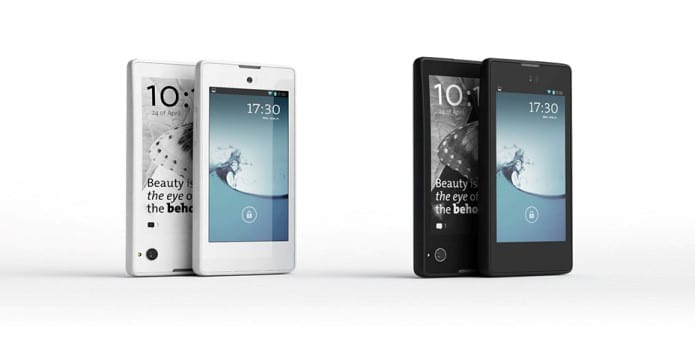Yotaphone ditches Android to marry Sailfish
Think beyond Android
Russian manufacturer Yota, well known for its Yotaphone dual screen phones, has recently announced that its next flagship phone will no longer operate using Android but Sailfish, an alternative developed by former Nokia engineers at Jolla.
This would be a huge win for Jolla, as the Finnish company beat out Samsung and its Tizen platform to score the Russian smartphone contract.
Sailfish is at its core a derivative of Meego, the former Nokia OS that was eventually abandoned for the Windows Phone. In theory, most Android applications would be compatible with this system.
Yota has not yet confirmed if Sailfish will also be integrated into the Yotaphone 2, which is currently on the market, or if it is only intended for upcoming models of Yota.
Yota is trying to set itself apart from the competition with its dual screen phones, including one with electronic ink which gives it a battery life that can reach 100 hours. It offers up to 16 levels of grey, has widgets for stocks, weather and social networks, and acts as an e-reader also. The first Yotaphone which debuted at CES in Las Vegas back in 2013, and the Yotaphone 2 currently retails for €599 in Europe.
Besides Yota, there are several manufacturers which are slowly breaking away from Android, such as Samsung with Tizen, or Huawei, which are releasing their own operating system. Finally, other free alternative systems are trying to break through, like Firefox OS (by Mozilla) and Ubuntu Touch (Canonical).
According to IDC, Android and iOS together is controlling more than 96% of the global smartphone market.
The YotaPhone was out of action after it was announced but the dual-screened Russian phone has been listed on Flipkart which is a tell-tale sign that the device might go on sale pretty soon. The YotaPhone was unveiled a year ago at the MWC and it garnered considerable attention as it sports two displays.
Its primary display is a traditional 4.3-inch HD LCD unit while the secondary one is an 4.3-inch E-Ink display with a strange resolution of 640 x 360 pixels and it is situated on its back. The secondary E-Ink screen will come in handy for viewing notifications, updates and also reading a full fledged E-Book, reducing power consumption and light glare.
The YotaPhone boasts of a 1.7GHz quad-core Snapdragon 400 processor with 2GB of RAM and 32GB of internal storage space. The YotaPhone features a 13-megapixel primary camera and an average 1-megapixel secondary front-facing camera. The device runs on the dated Android 4.2.2 Jelly Bean operating system and is powered by a 1,800mAh battery and the connectivity options include LTE, Wi-Fi, Bluetooth 4.0 LE and microUSB v2.0 port.
This phone will be a good choice for people who like to carry a single device which can even cater to their E-Book reading experience. The success of this phone largely depends on how they differentiate the functional aspect of both the screens.
